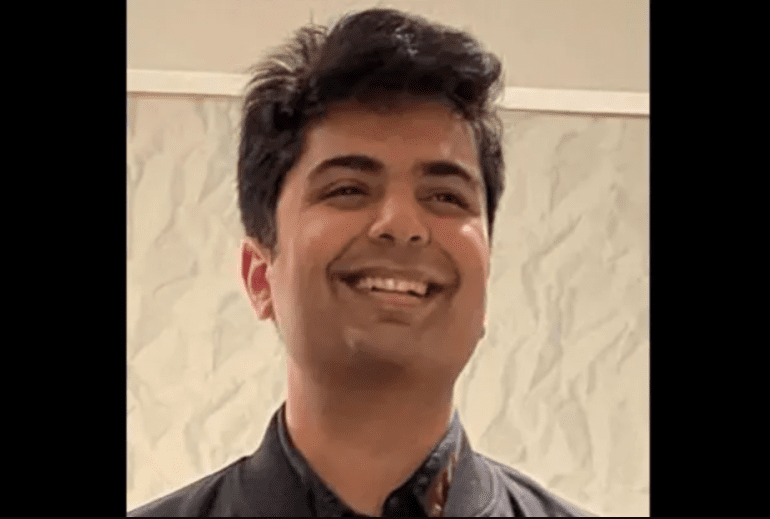TL;DR:
- Computer scientist Shreyas Fadnavis has introduced ‘Patch2Self,’ a self-supervised denoising MRI technique.
- Patch2Self simplifies complex neurological examinations and enhances cancer monitoring.
- Versatile and user-friendly, it’s a leading image-denoising technique in diffusion MRI.
- Significant applications in oncology, pediatric/neonatal imaging, and animal neuroimaging.
- Utilizes AI and ML to process healthcare data with speed and accuracy.
- Expands beyond denoising, improving dMRI image resolution and aiding advanced image-processing methods.
- Integrated into open-source software, making it accessible to various users.
Main AI News:
Shreyas Fadnavis, a promising computer scientist hailing from the esteemed institutions of Harvard University and Indiana University Bloomington, has introduced a groundbreaking self-supervised technology known as ‘Patch2Self’ that promises to accelerate the treatment of neurological disorders, simplifying complex neurological examinations and cancer monitoring. This innovation not only streamlines the healthcare process but also augments the overall outcomes for patients.
Speaking about the ingenious ‘Patch2Self Denoising MRI Technique,’ Shreyas Fadnavis, the visionary computer scientist, shed light on the intricate nature of neurological examinations, which often pose significant challenges due to their detailed and capricious characteristics. The driving force behind the development of the ‘Patch2Self dMRI’ technique was to expedite the scanning process, rendering it more efficient and less formidable for healthcare practitioners and patients alike.
Patch2Self (P2S) has emerged as a trailblazing image-denoising technique in the domain of diffusion MRI (dMRI), owing to its versatility and user-friendliness. One of its standout features is its independence from specific parameter settings, making it adaptable to a wide range of applications. Moreover, Patch2Self has played a pivotal role in oncology, particularly in delineating and quantifying treatment responses in cancer patients. This underscores its potential in clinical settings, notably in enhancing the precision of cancer treatment monitoring. Notably, its utility extends even to high-field imaging, underscoring its adaptability to diverse imaging technologies, as emphasized by Shreyas.
Denoising MRI stands as a potent technology that synergizes the capabilities of artificial intelligence (AI) and machine learning (ML) to swiftly and accurately analyze healthcare data. With a layered architecture of algorithms, it efficiently processes vast amounts of information, extracting invaluable insights. The advantages of employing machine learning in healthcare are multifaceted, encompassing heightened efficiency, enhanced accuracy, and the capacity for continual learning and adaptation.
Notably, Patch2Self’s significance extends to the realm of specialized medical imaging techniques. In pediatric and neonatal imaging, as elucidated by Trò et al. (2023), Patch2Self plays a pivotal role in obtaining clearer images, which is paramount given the challenges associated with scanning these delicate patient groups. Furthermore, its application in neuroimaging of animals, including mice and macaques (Buscham et al., 2021), highlights its broad utility in diverse research contexts beyond human clinical applications.
In a significant revelation, Shreyas Fadnavis shared, “Tests have unequivocally demonstrated that Patch2Self surpasses other existing tools in enhancing the clarity and precision of our brain maps. It accomplishes this feat without making any assumptions about noise interference.”
Remarkably, Patch2Self is not confined to conventional denoising; it also serves as a foundational component in super-resolution processes. This expansion of its capabilities broadens its application, particularly in enhancing the resolution of dMRI images, a critical aspect of intricate brain studies. Furthermore, it plays an indispensable role in generative diffusion model-based denoising techniques (Xiang et al., 2023), signifying its involvement in more advanced, AI-driven image-processing methodologies.
Given its extensive range of applications and effectiveness, it comes as no surprise that Patch2Self has seamlessly integrated into popular open-source software packages such as DIPY (Garyfallidis et al., 2014), QSIPrep (Cieslak et al., 2021), and Spinal Cord Toolbox (De Leener et al., 2017). These integrations extend its accessibility to a broader spectrum of users, ranging from clinical researchers to neuroscientists, thereby elevating the quality of dMRI data processing across various research and clinical settings.
Conclusion:
Patch2Self’s innovative approach to healthcare imaging has the potential to impact the market significantly. Its versatility, speed, and accuracy make it a valuable tool for healthcare practitioners and researchers. The integration into open-source software enhances its accessibility and adoption, further solidifying its place in the medical imaging market.

